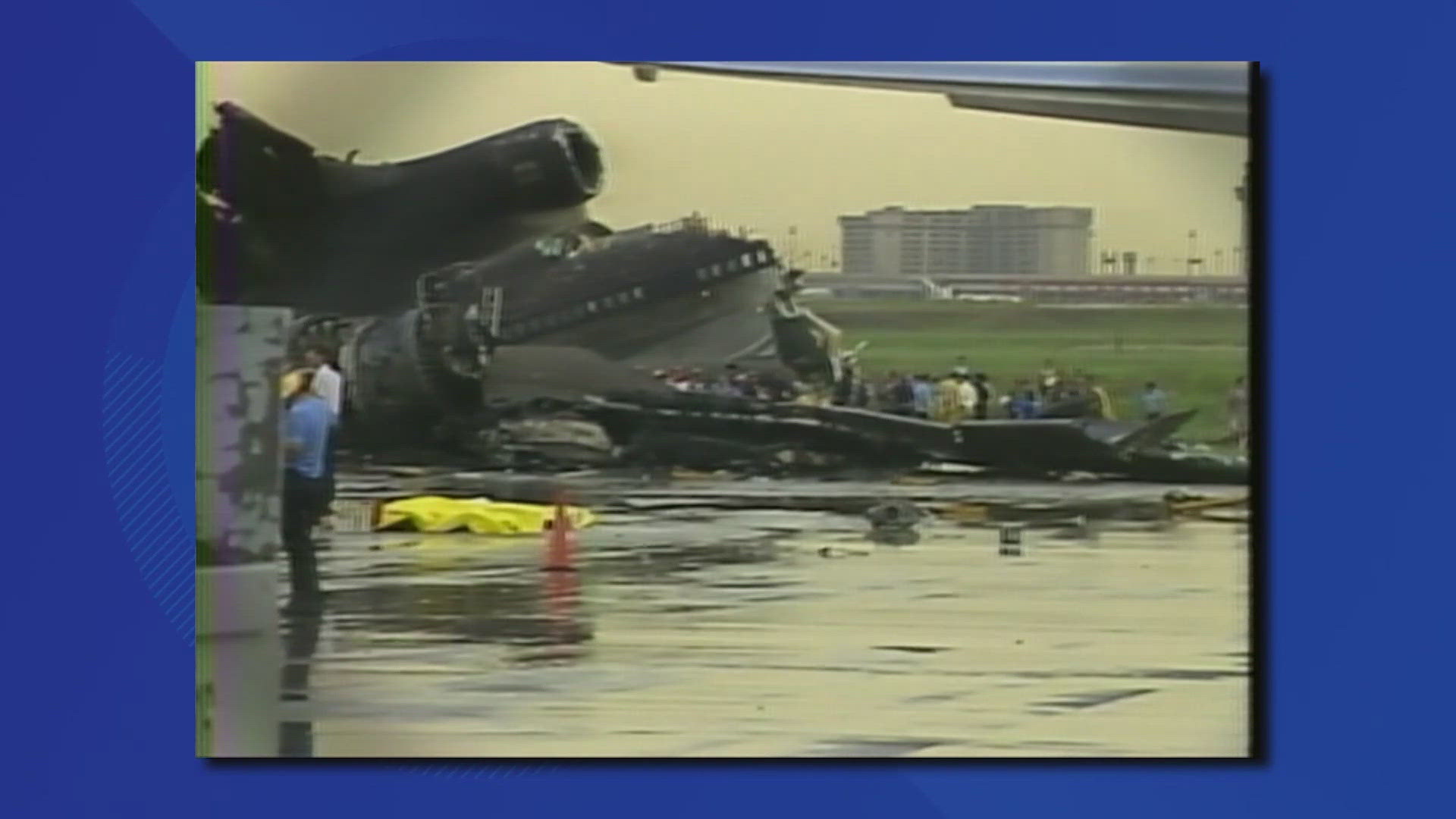DALLAS — The hundreds who visit Founder's Plaza every day at the north end of DFW International Airport come to watch the planes, listen to the tower radio traffic broadcast over loudspeakers, and see statues dedicated to the miracle of flight. But they don't always notice a simple marker engraved atop a granite pedestal that serves as a reminder of a horrible day, and the day that aviation saw a swift and sudden change.
On Aug. 2, 1985, Delta Airlines Flight 191, a Lockheed L-1011 Tristar, crashed on approach.
"The rain was so hard you couldn't see thirty feet in front of you," a witness told WFAA on the day of the crash.
The jumbo jet hit a car on Highway 114 as it descended, killing the driver. The plane then struck two water tanks at the airport before it broke apart and came to rest on the northeast corner of the airport property.
The crash killed 137 people, 24 survived.
"Unfortunately yes," said Lt. Col. Bruce Bleakley when asked if he remembered the crash. "That was a real disaster."
The retired Air Force pilot, aviation author, and former museum director of the Frontiers of Flight Museum in Dallas believes the pilots were doing their best with the technology they had at the time.
"The downburst at that time was a phenomenon that was just beginning to be understood," he said of the severe thunderstorm the aircrew chose to fly through.
The crash investigation singled out a microburst due to wind shear as the primary cause of the crash. The sudden downdraft, a rapidly descending column of air, on approach to the airport pushed the plane rapidly toward the ground without enough altitude for the pilot to recover. The National Transportation Board (NTSB) cited the flight crew's decision to fly through a thunderstorm, the lack of procedures or training to avoid or escape microbursts, and the lack of hazard information on wind shear.
"He probably didn't have a whole lot of information about the nature and the effects of the downburst," Bleakley said of the flight crew.
"The sheer magnitude of the accident of 191 is what pushed us over the edge of skepticism in aviation about downbursts and how dangerous they can be," said pilot, author, and aviation analyst John Nance. "If this could bring down an airplane as big and powerful as a Lockheed L-1011, then there was no place we could hide."
Nance and Bleakley say the crash of Delta 191 changed the understanding of microbursts and wind shear. On-board detection systems were ordered by the FAA. Airports like DFW installed ground-based detection equipment too.
"Because we now have GPS and are anchored to where we can tell the exact speed over the ground, you can program yourself and program your crew that if you're going to get below a particular ground speed, you've gotta go around. And that has saved a lot of airplanes," said Nance.
"And understanding the very nature of the cloud burst to start with makes it easier to predict the possibility," said Bleakley.
So, when you fly and you get upset when your pilot chooses to delay your flight and fly around a thunderstorm - Delta 191 could be part of the reason.
"Yeah it's much preferable to the alternative, which can be really scary," said Bleakley.
And that's why a memorial still stands, along with the painful lessons it taught the aviation community, 39 years to the day.

